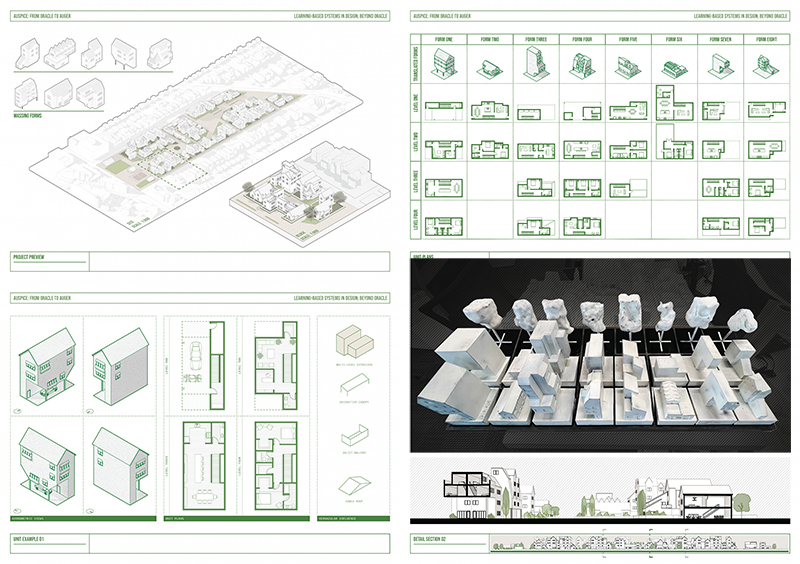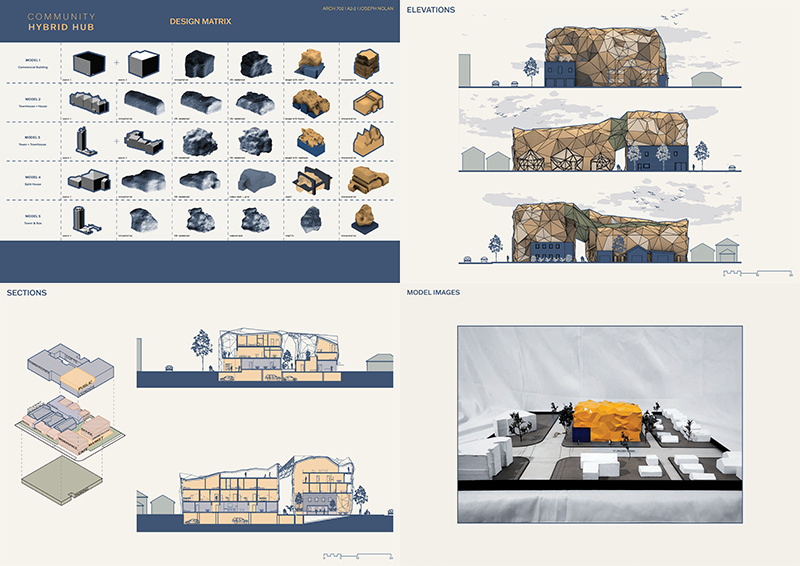Senior Research Studio in Architecture II: Beyond Oracle, the Use of Deep Learning in Design, W24
This course invites students to delve into the innovative realm of utilizing Artificial Intelligence (AI) in reinterpreting the typology of buildings in Calgary, aiming to foster exploration and the advancement of new design methodologies. This studio stands witness to an era where the explosive growth of AI is increasingly intertwined with architectural and urban design practices. The current framework employed in architectural design involves the incessant generation of images, such as perspectives or plan/section drawings from AI models, transforming these images into 3D forms, and unearthing spatial values from these forms until satisfactory results are achieved.
Launching this design research studio, this studio adopts a critical stance on the prevalent tendency to use AI as an oracle in contemporary practices. This studio advocates for a transition: beyond viewing AI as merely the oracle, there lies a vast horizon of benefits to reap from employing AI models in design, both creatively and scientifically. From this standpoint, the course aspires to train AI models on the forms of buildings in Calgary to discover new typo-morphologies, subsequently reinterpreting Calgary's vernacular to propose innovative vernaculars and prototypes.
To realize these objectives, students will complete an architectural design through three progressive phases:
Phase 1. Theoretical Foundation and Explorative Design. In the initial phase, students engage in readings, drawings, and debates to grasp the relationship between form and space in architectural design, understand what morphology is and its origins, and recognize the significance of the vernacular in design. This phase establishes the design theoretical foundation, setting the stage for the explorative design that characterizes this studio.

Buildilng Form Type Analysis and Generating New Typology Using the Provided AI software, Shivraj S. Gill & Saeid Shafiee, 2024
Phase 2. AI-Enabled Typology and Vernacular Reinterpretation. The second phase immerses students in the discovery and reinterpretation of a new vernacular, grounded in AI-assisted typology. Initially, students investigate the vernacular of Calgary’s buildings without AI assistance, understanding the city through its vernacular and variations. Subsequently, with AI’s assistance, they cluster Calgary's buildings based on morphological features and reinterpret the results to define a new vernacular.
Provided Software to Analyze Building Types and Generate a New Building Mass, Jinmo Rhee

A New High-rise Building Typology and Prototype for Calgary, Nai-xin Cheng & Nitya Gupta, 2024
Phase 3. Design Development of New Vernacular. The final phase is dedicated to the design development that materializes the new vernacular. Students will advance the reinterpreted vernacular into prototypes, devising rules for variations. Through site selection, they will analyze suitable locations for applying the prototypes, propose variations responsive to this analysis, and proceed with the spatial concretization and development.

Physical Model Study for Massinng a New High-rise Typology and Prototype for Calgary, Nai-xin Cheng & Nitya Gupta, 2024
This course, lying at the intersection of technology and creative inquiry, is designed for students who aspire to push the conventional boundaries of architectural design and seek to pioneer in the incorporation of AI into dynamic design landscapes.

New Vernacular for Caglary, Wesley Tran & Dash Maxwell, 2024

Massing for a New Vernacular through Additioning, Joseph Nolan, 2024